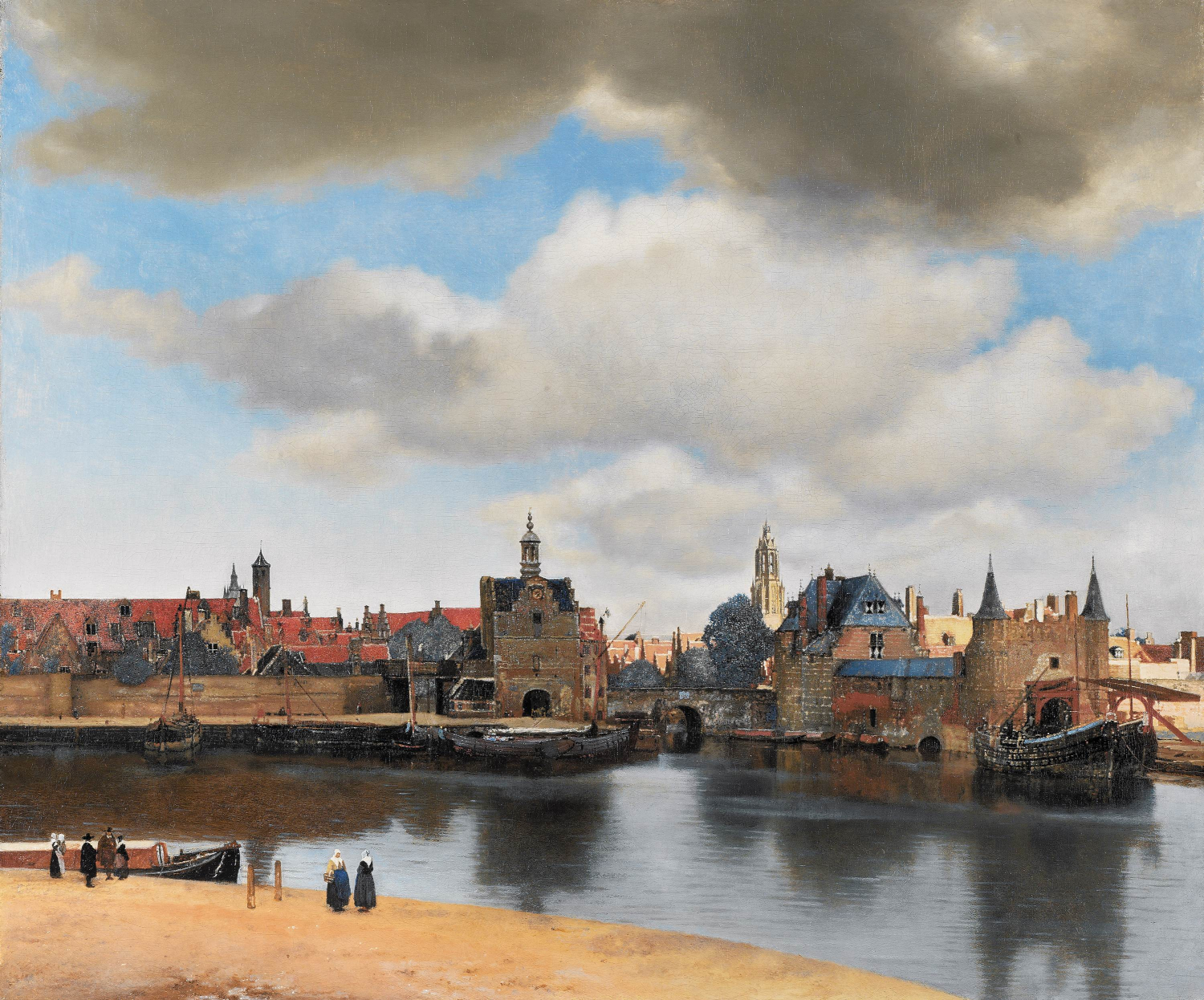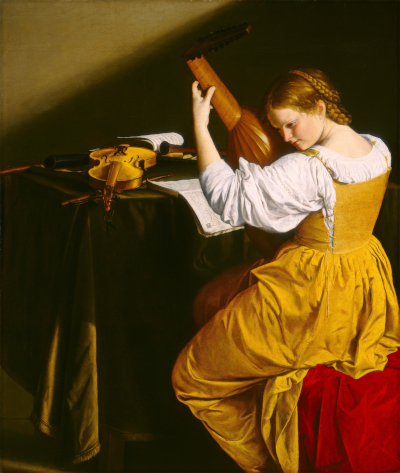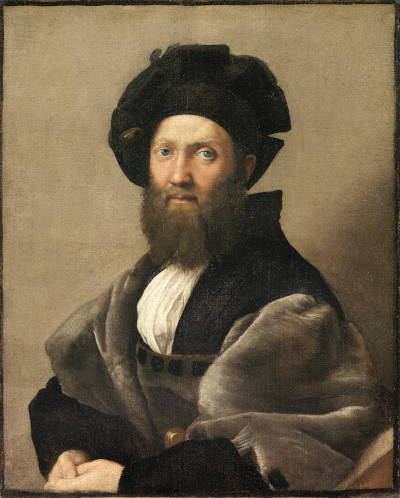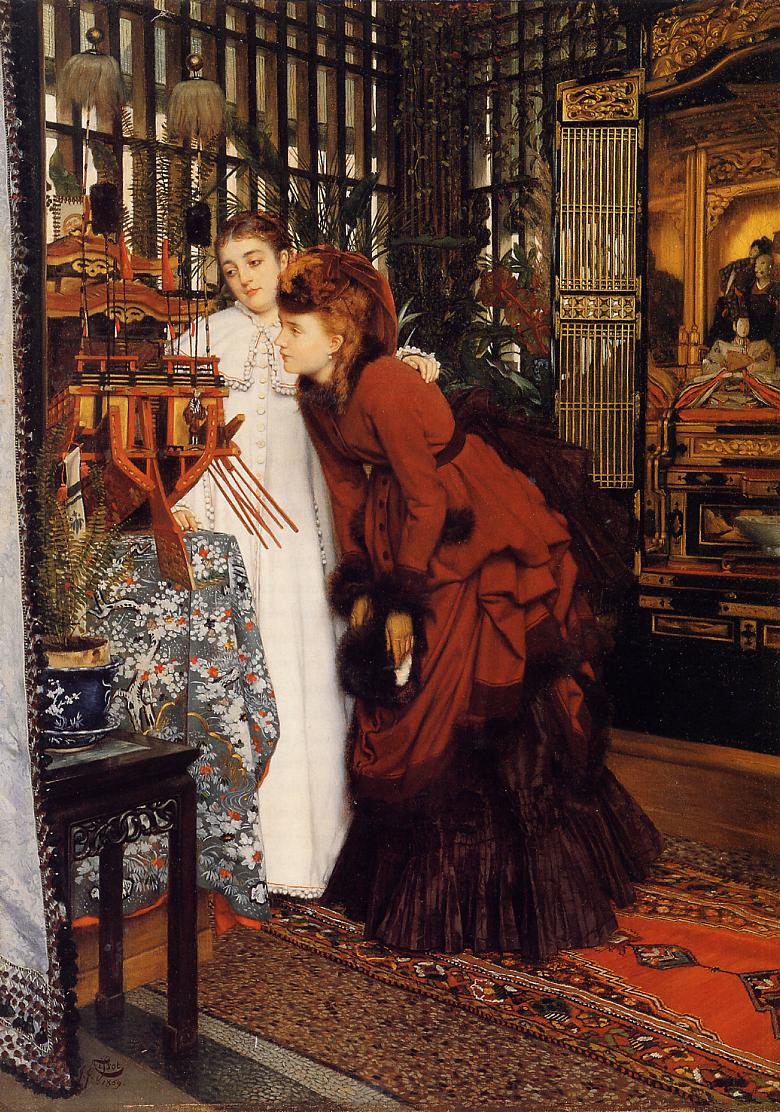The Apollonian Art
Selective re-creation of reality
Ayn Rand defines art as “a selective re-creation of reality according to an artist’s metaphysical value-judgments” (in “Art and Cognition,” published in The Romantic Manifesto). It is perhaps not surprising that a novelist should offer such an essentially mimetic definition of art. I have argued (in “Sing, Earthly Muse“) that she neglects the expressive aspects of art, and that this may explain why she has such profound difficulty in discussing the aesthetics of music. Kirsti Minsaas reached similar conclusions in her article “Mimesis and Expression in Ayn Rand’s Theory of Art” (Journal of Ayn Rand Studies, volume 7, issue 1, pp. 19-56): “Rand’s definition, with its emphasis on art as a selective re-creation of reality, is clearly biased in the direction of the overtly mimetic arts, like literature, painting and sculpture.” In terms borrowed from Nietzsche, Rand favors the arts of Apollo (associated by Nietzsche with the presentation of images) and struggles with those of Dionysus (associated by Nietzsche with music and dance).
But it’s also striking that Rand has much more to say about mimesis in prose fiction than about mimesis in the visual arts. She offers a detailed account of theme, plot, characterization, and style as elements of literary works. She gives only the barest hints of the elements of painting, and less than that for sculpture. This isn’t surprising, in that Rand herself was a novelist and not a painter or sculptor. But it does leave her theory of art incomplete, even within the limits of her essentially mimetic definition.
Johannes Vermeer
As a start on remedying this lack, I propose to consider theme as an element of painting (and the pictorial arts more generally). On one hand, the concept of theme is relevant to art in general: A theme is a principle of selection, and selection is essential to art, both in Rand’s definition and in my suggested alternative, “the selective expression of consciousness in a perceptible medium in accordance with a theme based on the artist's metaphysical value judgments.” On the other, it is an aspect of painting about which Rand has at least a little to say:
The greatest of all artists, Vermeer, devoted his paintings to a single theme: light itself . . . The physical objects in a Vermeer canvas are chosen and placed in such a way that their combined interrelationships feature, lead to and make possible the painting’s brightest patches of light . . . One might wish (and I do) that Vermeer had chosen better subjects to express his theme, but to him, apparently, the subjects were only the means to his end.
Vermeer exemplifies what Rand calls “a conceptual method of functioning visually.”
Consider, for example, his “View of Delft“. In the foreground of the scene is a river, brightly lit in a way that brings out the faint wrinkling of its surface. The buildings of the city cast shadows over the water, making it evident that the source of illumination is behind them. At the top of the painting, partially concealed by the spires of the city, is that source: the partially cloudy sky, with bright patches of blue that show through the clouds. Many of the buildings are in shadow, but near the center of the painting some buildings are brightly lit, precisely at the point where the bright sky and the bright areas of the water come closest to each other. Points of light can be seen on the roofs, the edges of buildings, and the hulls of boats. Rand’s comment about Vermeer’s theme seems borne out by this image.

Orazio Gentileschi
To explore this idea further, let’s examine some other paintings.
In Orazio Gentileschi’s “The Lute Player“, we see a young woman seated at a table that holds musical instruments — a violin and a recorder — and some open books on whose pages lines of musical notation can be seen. The woman’s back is toward us, but her head is turned to the left, bringing her face partially into view. Her eyes are not looking at us, but turned down, suggesting concentration. The right side of her head rests against the back of a lute, and her left hand is raised to hold its neck, with her fingers curving around to its front.
 Gentileschi’s theme is music — but not music simply in terms of a collection of physical objects. The visual focus of the painting is the musician’s head as it rests against her instrument. Clearly what she is doing is tuning her instrument, that is, making its sound musical. Gentileschi has shown us the musician’s consciousness: the focus of her attention, which is turned away from the viewer. That state of awareness, and the task to which it’s directed, are the essence of music, the thing that unites all the other visual details, through their mutual reference to it. Gentileschi has presented an abstract concept in visually concretized form.
Gentileschi’s theme is music — but not music simply in terms of a collection of physical objects. The visual focus of the painting is the musician’s head as it rests against her instrument. Clearly what she is doing is tuning her instrument, that is, making its sound musical. Gentileschi has shown us the musician’s consciousness: the focus of her attention, which is turned away from the viewer. That state of awareness, and the task to which it’s directed, are the essence of music, the thing that unites all the other visual details, through their mutual reference to it. Gentileschi has presented an abstract concept in visually concretized form.
This type of progression is described by a writer Rand did not approve of, James Joyce, in his novel A Portrait of the Artist as a Young Man, in a passage where the protagonist, Stephen Daedalus, explains a statement of Thomas Aquinas, a philosopher Rand did approve of: ad pulchritudinem tria requiruntur, integritas, consonantia, claritas (translated by Joyce as “Three things are needed for beauty, wholeness, harmony and radiance”). Wholeness, in Stephen’s explanation, means that the beautiful object is a single entity: the painting is one thing, bounded by the limits of one surface. Harmony means that all the parts of the beautiful object can be separately apprehended, but as related each to the others: “you pass from point to point, led by its formal lines; you apprehend it as balanced part against part within its limits” — as we have done with “The Lute Player.” Finally, radiance means that, with its having been analyzed into its parts, it can be seen that only that one synthesis of those parts is possible: in this case, the young woman’s fixed attention to the vibrations of her instrument’s strings is the element that unifies the painting.
In a pictorial work, unlike a musical one, there is no physical progression of the elements through time, nor, unlike a literary one, is there a verbal progression from word to word, sentence to sentence, which implies a similar sequence in time. The eye can travel about the work, from point to point, with all the points existing simultaneously. But the composition of the painting, the arrangement of the elements of what it shows, guides the eyes to focus on specific locations within the painting. In a well conceived painting, those elements give the clearest expression to the theme.
Lawrence Alma-Tadema
Consider, for example, another painting inspired by the performing arts:
"Sappho and Alcaeus”, by Alma-Tadema. Here, at the right of the painting, we see a man sitting in a chair, holding a lyre and plucking its strings. Opposite him, seated on a semicircular stone bench, sits a woman in a long gown, leaning on a pillar that holds a laurel wreath, and staring fixedly at the man. These are Sappho and Alcaeus, for whom the painting is named. Four other women, all young, sit or stand on the same benches, also listening. The women are in bright sunlight; Alcaeus is partly shaded. Here we have an image that reflects the ancient Greek concept of the lyric as a form of poetry: one in which the poet speaks or sings for and as himself (or herself), and allows himself to be overheard by others — as Alcaeus is overheard by the young women of Sappho’s school while he addresses his song to Sappho herself. The laurel fits the same theme, being sacred to Apollo, patron of the Muses, and the natural gift to a poet, a gift that in this case it is in Sappho’s power to grant or withhold. In showing this, Alma-Tadema invites the viewer to focus on two different figures on opposite sides of the painting, with the eyes passing between them.
Raphael
 Raphael’s "Portrait of Baldassare Castiglione” shows a man gazing reflectively at the viewer. The background is light brown, and featureless, except for a dark area at the lower right, suggesting a shadow cast by the subject. Castiglione’s clothing is largely a black that stands out against the background and itself forms a background for his white shirt front and his face and hands; wrapped around his torso is a fur with complex folds, from which highlights emerge. There’s nothing flashy in the figure; all the details suggest quiet self-possession, from the rich but restrained clothing to the reflective eyes — an embodiment of the quality of sprezzatura (seeming effortlessness or nonchalance) that Castiglione’s Book of the Courtier recommended.
Raphael’s "Portrait of Baldassare Castiglione” shows a man gazing reflectively at the viewer. The background is light brown, and featureless, except for a dark area at the lower right, suggesting a shadow cast by the subject. Castiglione’s clothing is largely a black that stands out against the background and itself forms a background for his white shirt front and his face and hands; wrapped around his torso is a fur with complex folds, from which highlights emerge. There’s nothing flashy in the figure; all the details suggest quiet self-possession, from the rich but restrained clothing to the reflective eyes — an embodiment of the quality of sprezzatura (seeming effortlessness or nonchalance) that Castiglione’s Book of the Courtier recommended.
Albrecht Dürer
In Albrecht Dürer’s "Young Hare" we again have a neutral background in a very light brown, with a small area of shadow at the lower right. The painting shows the elaborate texture and subtly varied colors of the animal’s fur, against which the eyes, the raised vibrissae, and the sharp claws on the feet stand out. The large ears are erect and the right ear is turned slightly forward. Every detail gives a sense of the animality of its subject.
Jacob van Ruisdae
Jacob van Ruisdael’s "Dunes by the Sea" juxtaposes land, water, and air in an image of the Dutch seashore. The human presence in this painting is minimal: a few sails on the horizon at the left of the painting. But the dunes are covered with dark green vegetation. A twisted tree rises from the top of the closest dune; beyond it the branches of another tree stretch toward the sea, and there are suggestions of more trees in the distance along the line of the top of the dunes. At the bottom right part of the trunk of another tree lies fallen on the ground. A tuft of some smaller plant, perhaps a grass, can be seen at the borrom left, at the very edge of the water. All through the scene are images of survival and endurance in the natural world. The total effect is somewhat like that of many Japanese paintings of the natural world, though the medium and technique are quite different.
Subject, focus, visual intensity
In her discussion of literature, Rand links the theme of a novel to what she calls its “plot-theme”: for example, the theme of Atlas Shrugged, she says, is “the role of the mind in human existence,” but its plot-theme is “the mind on strike.” In these and other paintings, the role analogous to plot-theme seems to be that of “subject”: the concrete physical object or scene that the painting shows, and that embodies its theme. Where in literature “plot-theme” seems to be an idea peculiar to Rand, in painting “subject” is, if anything, more widely acknowledged as an element than “theme.” In each of the paintings discussed here, it’s fairly straightforward to identify a subject, from the juxtaposed Sappho and Alcaeus to the dunes along the Dutch seacoast. If we want to identify a theme, we can start by looking at the subject.
The other thing I would note is in each painting, whether it places the subject against a neutral background, as with “Portrait of Baldassare Castiglione” or “Young Hare,” or adds a complex background scene to it, as with “Sappho and Alcaeus,” the eye is naturally drawn back to specific parts of the painting. Often they are the brightest areas, though it’s also possible for darkness to give emphasis by contrast. The consequent visual intensity may be what Joyce is getting at in his translation of claritas as “radiance.” These are where the artist shows most directly how the subject is relevant to the theme — that Gentileschi’s young woman’s whole attention is focused on the musical sound of her lute as she plucks its strings, or that Vermeer’s city is made visible by light and transforms it.
This is a different art than narrative or drama. A painting need not have a plot at all; at most, it seems to function as a vignette, a single instant that implies a likely future without showing it (such implications were the distinctive new quality of the baroque). But as with literary works, it includes representations of certain things and excludes others, chosen because they are or are not relevant to a central abstraction. This showing is what Nietzsche considered to be the common element in the arts he called “Apollonian,” of which painting may be one of the purest examples.
Taking all of these aspects together, it does seem that the concept of theme, defined in terms of Rand’s definition of art, can be seen as relevant to painting (and to the pictorial arts generally, though drawings and engravings use methods other than differences between light and dark to attract the eye to focal points in an image).
© 2023 William H. Stoddard
Friedrich Nietzsche at Troynovant
ArtWords at Troynovant
illustrated words, literate drawings;
cartoons, graphics, books about art
More by William H. Stoddard
painting, bottom:
"Young Ladies
Looking at
Japanese Objects"
by James Tissot
1869

| Troynovant, or Renewing Troy: | New | Contents | |||
| recurrent inspiration | Recent Updates | |||
|
www.Troynovant.com |
||||
|
Essays:
A-B
C-F
G-L
M-R
S-Z
|
||||
| Personae | Strata | Topography | |
|
|||